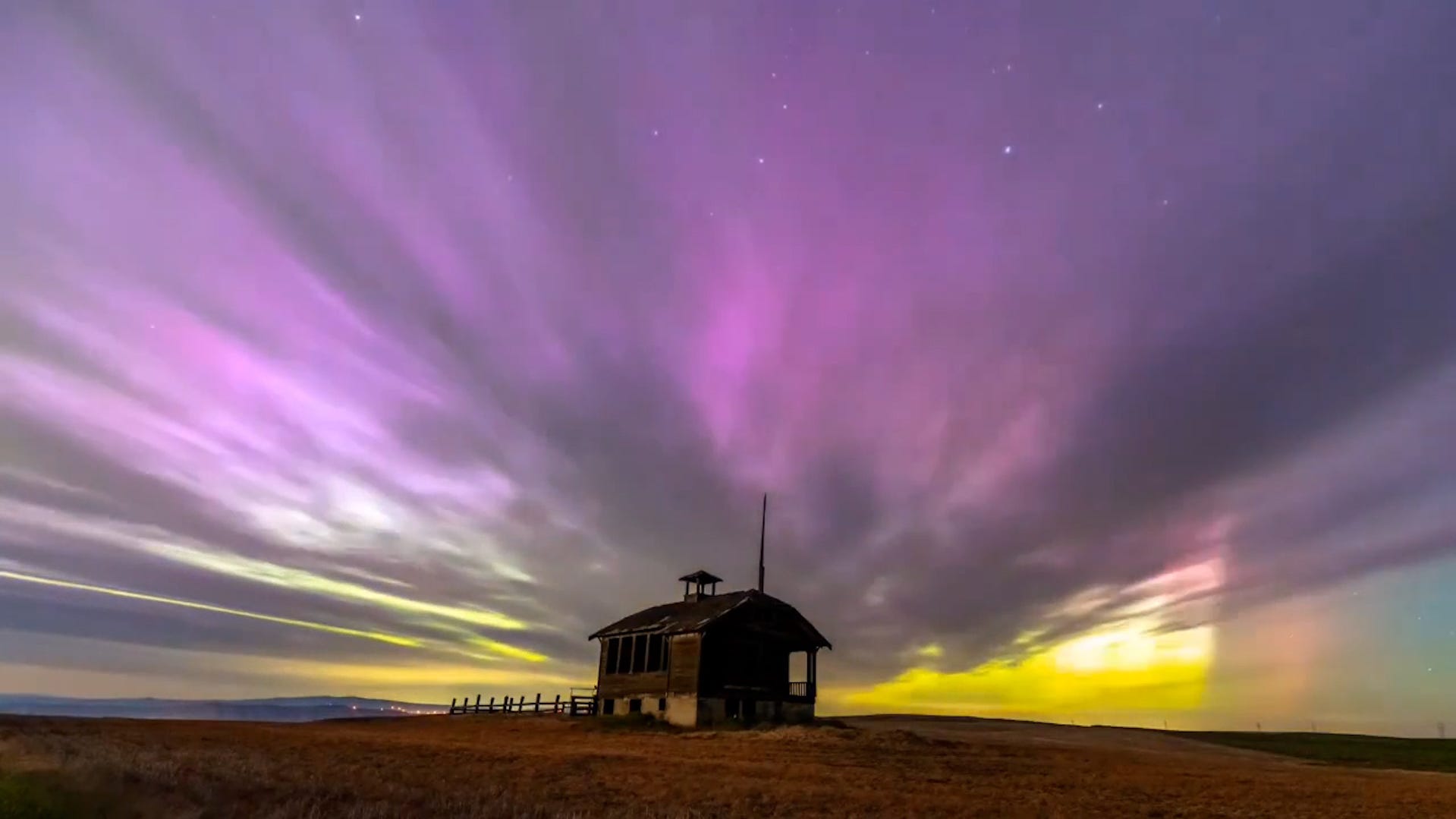Northern lights may be visible in these states this weekend

Americans in some northern U.S. states may have another opportunity to catch a glimpse of the night sky's greatest spectacle.
The northern lights are slated to be visible in states from Idaho to New York on the night of Saturday, June 14 as a geomagnetic storm watch was issued, according to the National Oceanic and Atmospheric Administration. The agency's Space Weather Prediction Center classified the geomagnetic storm as a G2, the second lowest level on its G scale that sorts intensity from G1 (least) to G5 (most).
The stunning natural phenomenon, formally known as aurora borealis, is expected to be visible over some northern-tier and upper Midwest states, according to the NOAA.
Hopeful viewers may have a smaller window to see the lights because of longer daylight hours as the summer solstice arrives between June 20 and 21.
Earlier this month, people in around 16 different states were blessed with the opportunity to see the swirling green, red and purple lights.
What are the northern lights?
Aurora borealis, commonly known as the northern lights, are colorful ribbons of light that weave across Earth's northern or southern polar regions, according to NASA.
Geomagnetic storms are caused by solar activity like solar flares or coronal mass ejections. The solar wind moves energetic charged particles from these events away from the sun to produce the northern lights.
Can you see northern lights with the naked eye?
Northern lights can be safely viewed without a telescope or microscope. The visibility of the aurora depends on multiple factors, including location, weather, time of night and the level of geomagnetic activity present.
Contributing: Julia Gomez, Doyle Rice, and Dinah Voyles Pulver, Paste BN